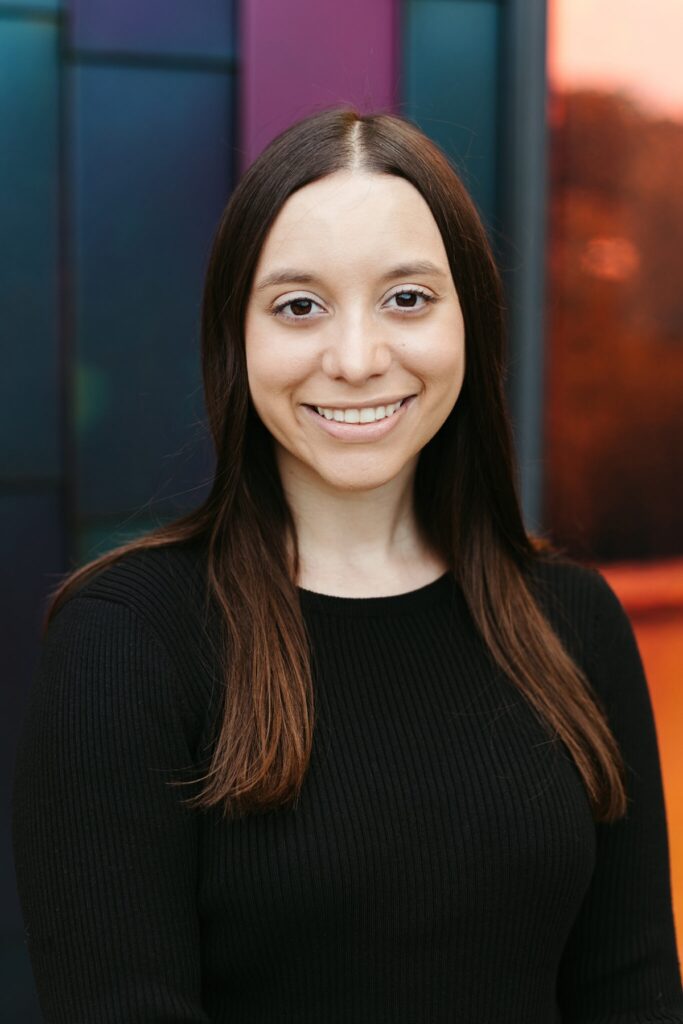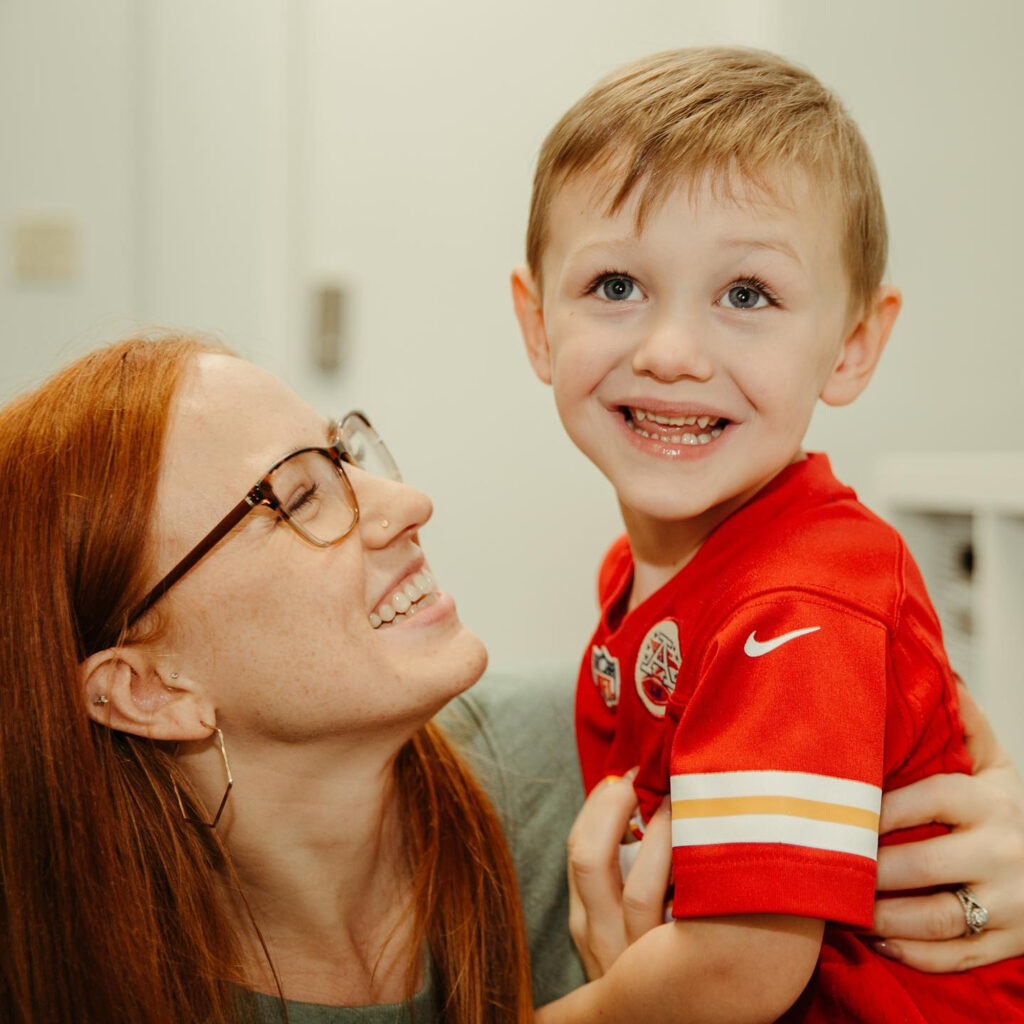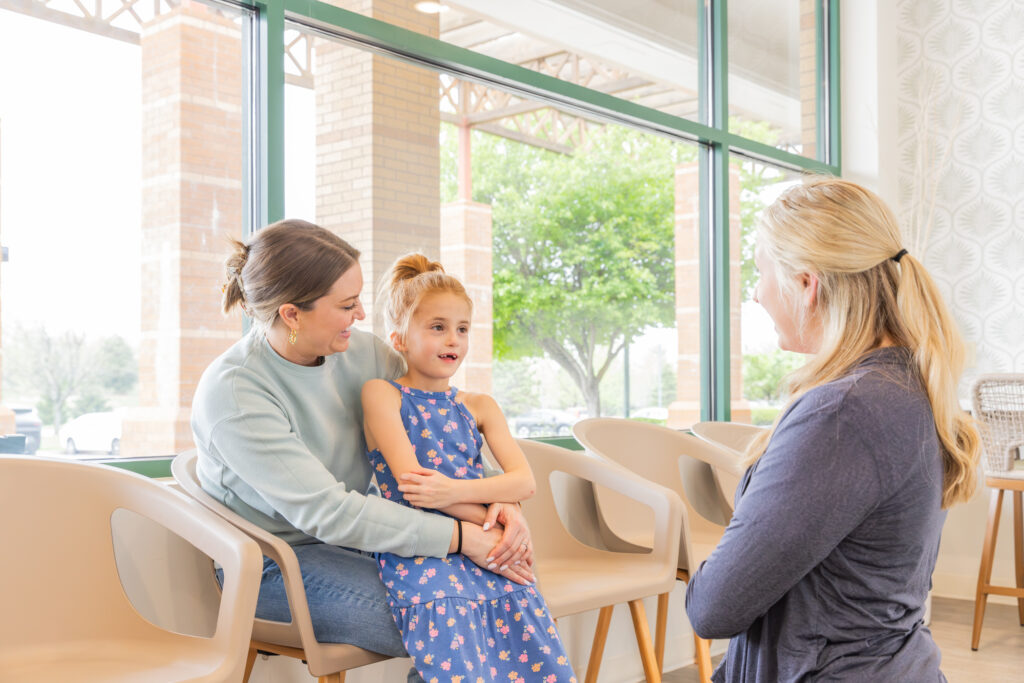
My day starts around 6:15 AM with a walk and breakfast for my dog (plus one big squeeze before I head out the door!). I usually get to the clinic 10–15 minutes before my first client at 8:00 AM. That little window gives me time to review treatment goals, set up activities, grab coffee, and chat with coworkers before the day gets rolling.
Morning Sessions (8:00 AM – 12:00 PM)
 The morning is filled with four back-to-back, one-hour sessions. Each child brings unique strengths, personalities, and challenges—which makes every day rewarding and different.
The morning is filled with four back-to-back, one-hour sessions. Each child brings unique strengths, personalities, and challenges—which makes every day rewarding and different.
First client: A high school student with a complex diagnosis. Sessions often focus on self-regulation, activities of daily living, and leisure play to build coordination and independence. I adapt sessions based on energy and attention that day, sometimes starting with sensory supports like vibration, squeezes, or preferred toys. At the end, I provide parents with a summary and tips for home carryover.
Second client: A 4-year-old boy working on regulation, social skills, and fine motor development. After a quick check-in with parents, we start with free play, then an obstacle course to help regulate his body and prepare for table tasks. Today we crafted a dinosaur—cutting, coloring, gluing, and tracing his name—followed by a movement break and a peer game with supports like a wobble cushion and fidgets. At the end of the session I recap what we did that day for parents and allow for any questions or education that may need to be had.
Third client: A 3-year-old girl focusing on emotional regulation and social play. Mom comes into the session that day so she can see how I facilitate play and learn strategies in the moment for regulation. We start in the gym, then move to pretend play with princesses to act out scenarios and practice coping strategies. Mom joins in the play and she comes up with real life scenarios that have happened at home so we can all problem solve together and help the “princesses” work through their emotions. Then we completed a craft with her sibling that helps build communication, sharing, and direction-following. Throughout the session, I touch base with mom about strategies that are working for improved carryover at home and make sure she feels comfortable in her skills.
Fourth client: A 2nd grader working on handwriting, regulation, and interoception. We mix obstacle courses with “body check-ins” to connect physical sensations with coping strategies. After handwriting warm-ups using therapy putty, we practice worksheets with supports like visual timers, popsicle-stick spacing, and fidgets. I finish by sending home worksheets and tips for parents to use with homework.
Break
By 12:00 PM, it’s lunch—usually a mix of documenting, chatting with coworkers, and the occasional Starbucks run. Today, I have three daily notes and 1 progress note. My daily note consists of writing about what we did during that session and how it targeted their goals. The progress note allows me to review the clients goals, update as needed, or add goals if I need to. I knew I had a progress note for this client, so I discussed with caregivers previously if there were any other high priority goals they would like me to target. For this progress note, the client met one goal and I added a new goal to continue working on that particular skillset but at a higher level. After reviewing the goals I also add in what we did during that session for that day and sign off on it so parents can see in their portal an update on progress. After all my documentation was done, I had a few minutes to chat with the PT and SLP about a particular client we all shared. We discuss their progress and how each discipline was conducting their sessions to compare on what is going well and what we still need to work on. This is always helpful to get all expertise opinions to have a holistic view on whats best for the client.
Afternoon Sessions (1:00 PM – 5:00 PM)
The afternoon brings another set of clients and fresh goals.
First client: A 5-year-old working on feeding, sensory tolerance, and fine motor skills. Using the SOS feeding approach, we make a “funny face” out of food, focusing on small steps—smelling, touching, and tasting. After, we worked on painting and I modeled for him finger painting with very playful engagement. He touched paint for the first time during messy play, which was great progress! I wrap up with caregiver education to support progress at home.
Second client: My next client canceled due to illness, which gave me an unexpected hour to catch up on behind-the-scenes work. I used the time to finish documentation, respond to parent emails, and create visuals and supports to help my clients both in the clinic and at home. I also connected with two children’s schools to share updates on strategies that have been successful in sessions and to align on goals for better continuity of care. Before the hour ended, I put together a visual to support one child’s self-care skills and emailed it to their parents. With those tasks wrapped up, I was ready to jump back in for my final two sessions of the day.
Last two clients: Elementary-aged kids focusing on executive functioning, impulse control, regulation, and social skills. We collaborate in the gym on group activities that challenge planning, organization, and teamwork in a busy environment. Then we move to a quiet room for reflection and problem-solving before finishing with free time. Parents receive feedback and resources for at-home support.
Wrapping Up
After my last session, I might grab dinner or relax with coworkers before heading home to my dog. My evenings are for recharging—because tomorrow brings a whole new set of little victories, challenges, and joyful moments.
Being a pediatric OT means no two days ever look the same, and that’s exactly what I love about it. Every child teaches me something new, and every session is a chance to celebrate growth—no matter how big or small.
This blog was originally written by Nicole Pearlstein, OTR/L, during her time as an occupational therapist at Playabilities for Sensational Kids. Nicole has since relocated to another part of the country, but we’re grateful to share her perspective on what a ‘day in the life’ looks like for an outpatient pediatric OT. Her words highlight the heart, creativity, and joy that define the Playabilities approach to care.

